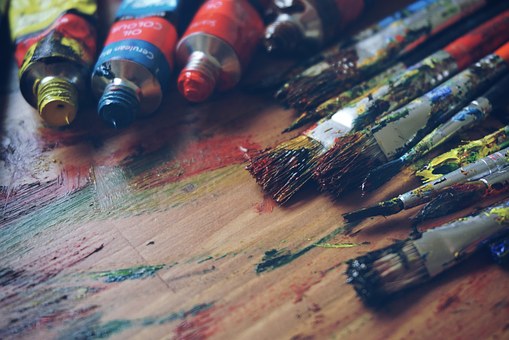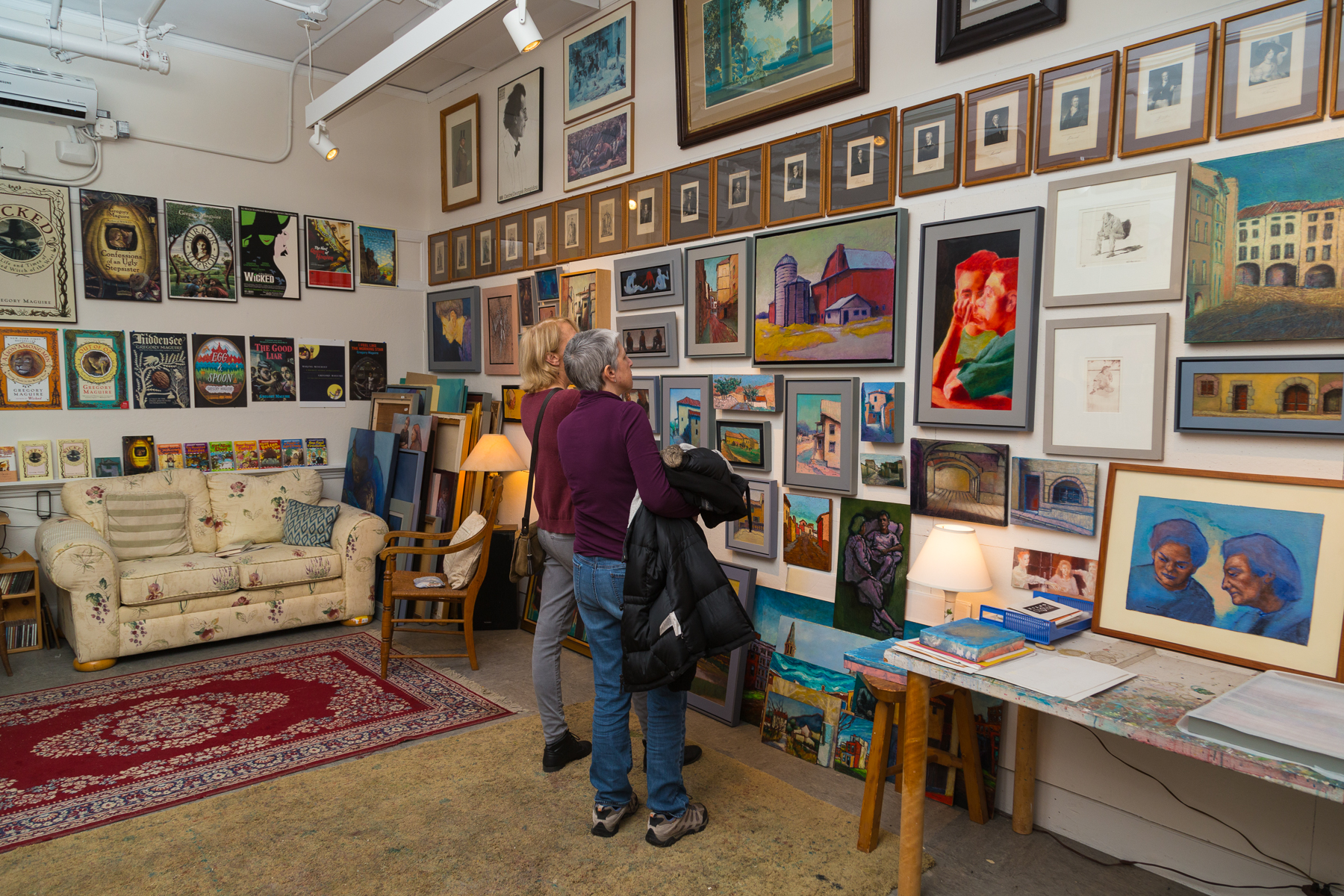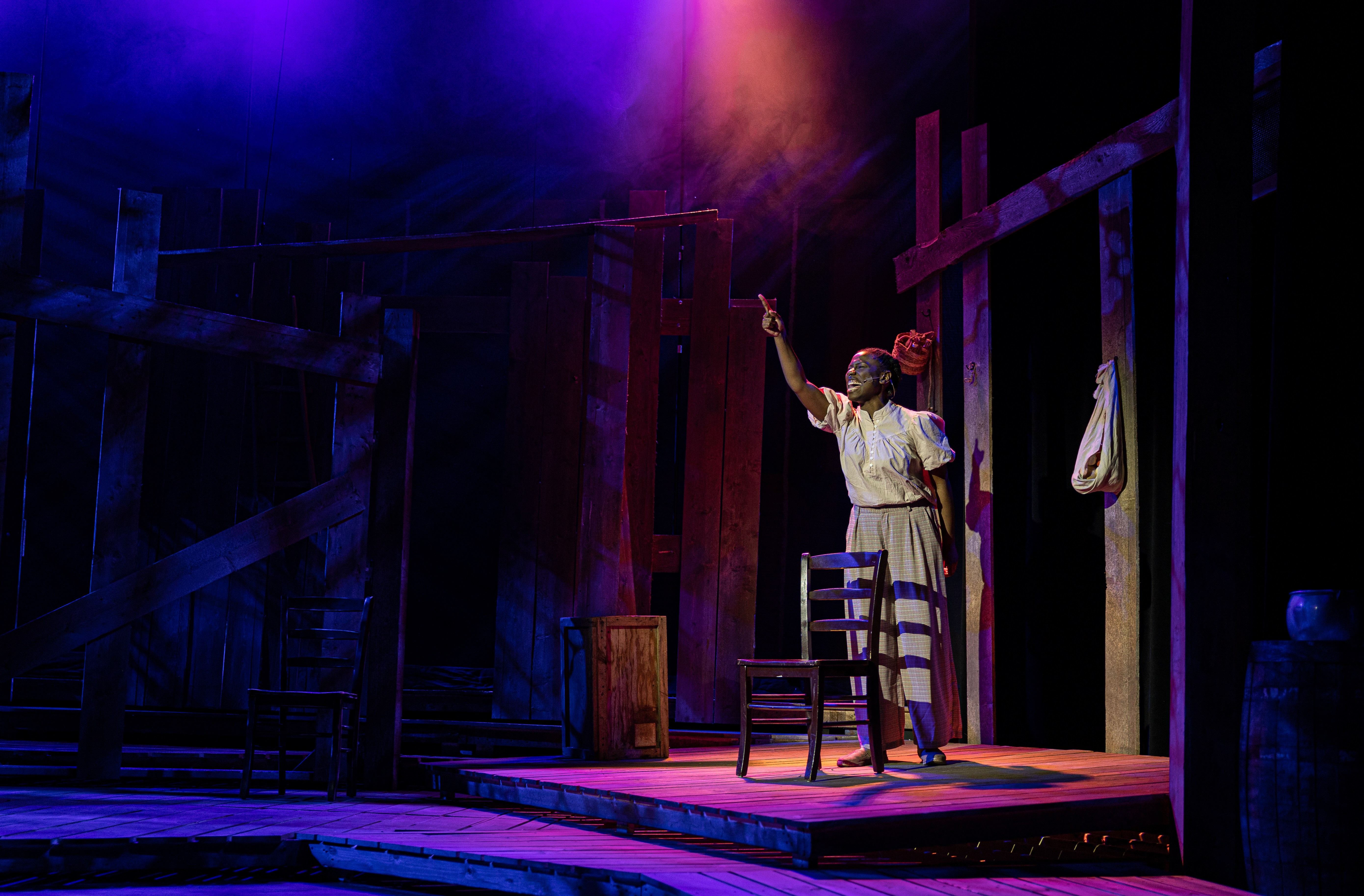Featured Artists
Artists on Site
Felipe de Avila Franco
BIO
David Cass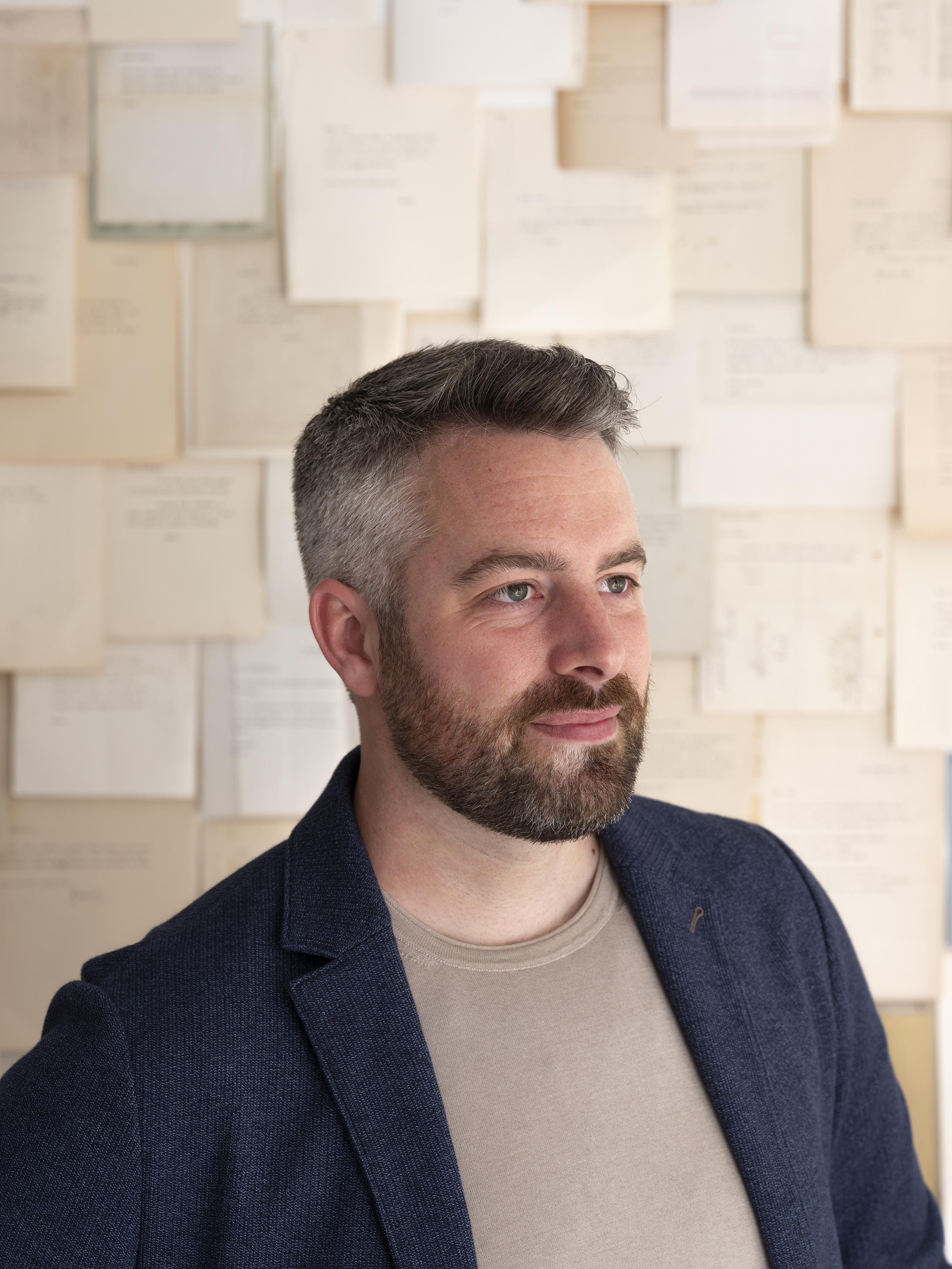 David Cass (b. 1988, Edinburgh) is an artist best known for his environmentally themed projects using found and recycled materials. His subject over the last decade has been the sea, and in recent years, the issue of sea rise. We know that global sea levels are climbing. However, due to various factors, the rate of rise from coast to coast is not even. Around the world, numerous locations are experiencing more dramatic fluctuations in sea level and more frequent inundation – particularly the American East Coast, where floods in some places are now at least five times more common than they were in the 1950s.
David Cass (b. 1988, Edinburgh) is an artist best known for his environmentally themed projects using found and recycled materials. His subject over the last decade has been the sea, and in recent years, the issue of sea rise. We know that global sea levels are climbing. However, due to various factors, the rate of rise from coast to coast is not even. Around the world, numerous locations are experiencing more dramatic fluctuations in sea level and more frequent inundation – particularly the American East Coast, where floods in some places are now at least five times more common than they were in the 1950s.
Cass has exhibited his multidisciplinary artwork in a range of venues and festivals since graduating from Edinburgh College of Art in 2010: including group showings at Istanbul Museum of Modern Art, MAXXI Museum in Rome, The Royal Academy (London) and Royal Scottish Academy (Edinburgh), and solo presentations at The Scottish Gallery, British Institute of Florence and Venice Biennale. His tenth solo exhibition is scheduled for 2024.
Although primarily a painter, his practice also involves installation, photography, digital media, writing and curation. Among other awards, Cass has received Winsor & Newton’s top award for his projects in watercolour (2016) and the Royal Scottish Academy’s Benno Schotz prize (2018) as the most promising Scottish artist under 35. He’s provided illustrations for books by Mark Haddon (2019) and Claudia Roden (2021) and worked collaboratively on climate change related projects with artists around the world via the curatorial platform A La Luz.
Artist Statement
Ongoing project Where Once the Waters comprises hundreds of typed letters, each offering “the reader” data relating to changes in sea levels at coastlines around the world as a result of global heating. But not just any coastlines: each one has been addressed to a specific individual (a participant in Cass’ yearslong sea-level survey) and relates to the shores nearest their places of birth. This attempt to personalise – to bring home – the data of climate change lies at the core of the project. Knowing what is happening at places we are connected to allows us to engage with a topic so often shrouded in complex science, or average global figures not specific to any one location.
Our coastlines are windows to the past, present, and future. Being on the front-line, they are perhaps our clearest indicators of change. This project outlines in a novel way how they are retreating, eroding, sinking, and even lifting as water warms and swells. Each letter offers figures (measurements) we can visualise, often because the level of change described might be contained within the sheet of paper the letter is typed upon.
The letters range in pace and tone, presented without apparent categorisation, for, this issue is not exclusive to any one location. The artist’s decision to use exclusively found, vintage materials provides one suggestion of how we can move forward: by caring for our resources and re-using what we already have. To further personalise the subject, the letters are typed onto familiar papers, those which would have accompanied people through their lives: correspondences, birth certificates, documents, wills, deeds… items which have lived through these significant and irreversible changes in our waters.
www.davidcass.art
David Ellingsen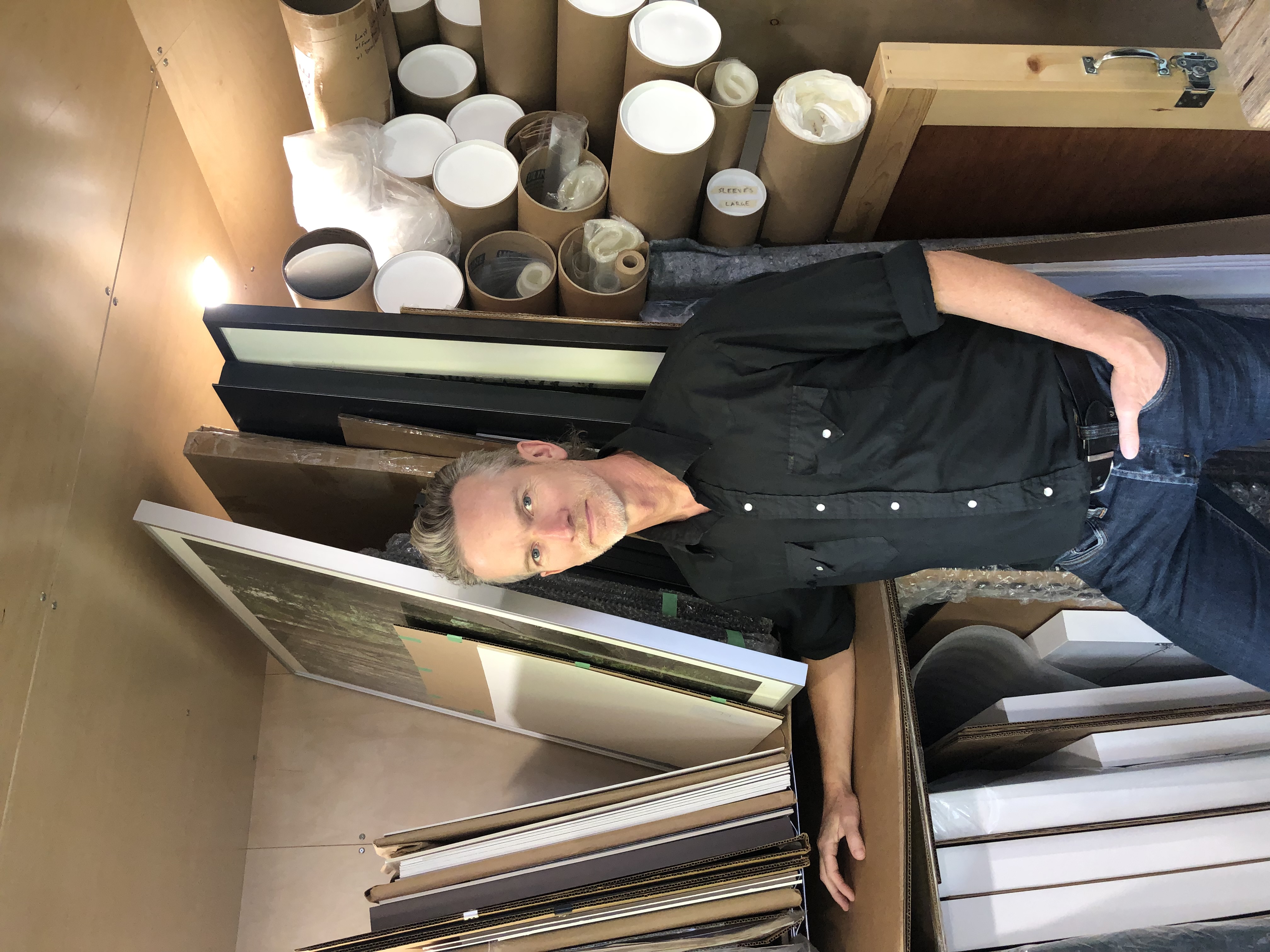 David Ellingsen (b. 1969, Campbell River, BC, Canada) is a Canadian photo-based artist making work that speaks to the relationship between humans and the natural world. He works predominantly in long-term projects with a focus on forests, biodiversity and climate.
David Ellingsen (b. 1969, Campbell River, BC, Canada) is a Canadian photo-based artist making work that speaks to the relationship between humans and the natural world. He works predominantly in long-term projects with a focus on forests, biodiversity and climate.
Recent exhibitions include China’s Lishui Museum of Art, the San Jose Institute of Contemporary Art, Lithuania’s Kaunas Photo Festival and Canada's Campbell River Museum. Ellingsen’s photographs are part of the permanent collections of South Korea's Datz Museum of Art, China's Photography Museum of Lishui, and Canada's Beaty Biodiversity Museum and Royal British Columbia Museum. They have been shortlisted for Photolucida's Critical Mass Book Award, appeared with National Geographic, and awarded First Place at the Prix de la Photographie Paris and the International Photography Awards. In his earlier years Ellingsen was a freelance assignment photographer, eventually working for clients including the New York Times Magazine, Business Development Bank of Canada, Canadian Medical Association, Oprah Winfrey Network, and CBC Radio Canada.
With his husband, Ellingsen lives and works in the Pacific Northwest with a place-based practice formed by the landscape he grew up in. His photographs are made primarily around his home in Victoria and the island of Cortes, where he was raised, 150 miles to the north. Since arriving as that island’s first immigrant settlers in 1887, five generations of his family have resided on these traditional territories of the Klahoose, Tla’amin and Homalco First Nations.
Artist Statement
"These images engage the mind, heart, and senses at once – bringing us into the cataclysm of runaway fire through unexpected pathways that avoid sensationalism.”
- Miranda Massie, Director, Climate Museum, New York USA
Since 2011 I have been working daily on a long-term project, an anecdotal archive, functioning as memory, recording, encoding, and storing milestones of incremental climate change. Nestled within this greater process-based series, the photographs of Wildfire began appearing unexpectedly, again revealing accumulations emerging over time, but now through the smoke from fires both local and global over the last 5 years.
Victoria, in British Columbia, Canada, where I live, has had intense periods of smoke blanket the city since 2017. That year saw a total of 12,161 square kilometres incinerated by the end of the fire season, at the time the largest total area burned in the province’s history. A state of emergency was declared on July 7th and extended 4 times, eventually lasting through September 15th to become the longest in provincial history.
The summer of 2018 saw unprecedented wildfire events around the globe: fires broke out north of the Arctic Circle, California had both the first and second largest fires in their history, Greece had the second deadliest wildfires this century, and smoke from fires burning in Siberia crossed to North America affecting both the US and Canada. Here in British Columbia, it surpassed 2017 with a greater number of fires overall and a larger total area burned. Wildfire smoke left some areas in the province with the worst air quality in the world with alerts issued as far away as Prince Edward Island on Canada's east coast, over 4000 km away.
2020 experienced another record-breaking wildfire season stretching through California, Oregon, and Washington states. air currents pushed the smoke north from the USA and from September 12th through 14th Vancouver (100 km from Victoria), saw its air quality reach the worst levels of any major city on the globe. The smoke drifted across North America and could eventually be seen as far away as Northern Europe - over 8,000 km away.
As I write on this 18th day of July in 2022, as the forests around the planet continue to dry, combust, and vapourize, as western Europe endures a “heat apocalypse” and burns uncontrollably, I expect the end of this project will arrive with the end of my endurance to stare into this furnace of our own making.
Welcome to the Pyrocene...
www.davidellingsen.com
Tanja Geis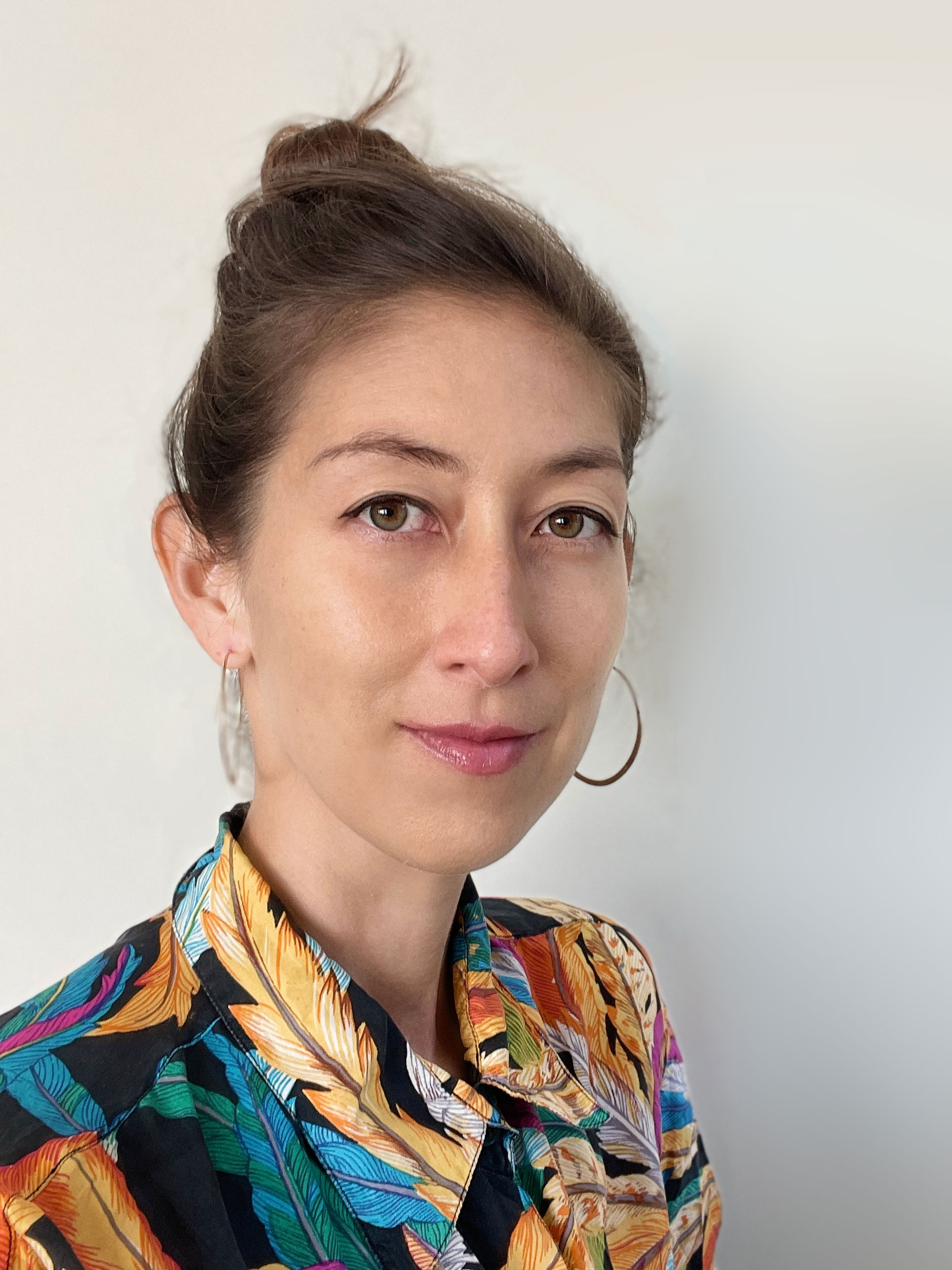 Tanja Geis makes research-based paintings, drawings, sculptures and videos that invite intimacy with human-disturbed marine and coastal ecosystems through queering, drawing close to and staying with the impacts of humans on the liveliness of non-humans. Geis holds a Masters of Fine Art in Art Practice from University of California Berkeley, a Masters in Resource Management in Marine Management from the University of Akureyri, Iceland, and a Bachelor of Arts in Fine Art from Yale University. Her work has been exhibited at the Berkeley Art Museum, the Santa Cruz Museum of Art and History, the San Jose Institute of Contemporary Art, and galleries in Iceland, Scotland, England, Hong Kong and Japan. She has taught at University of California Berkeley. Geis' awards include a Graduate Fellowship and Affiliate Artist Fellowships at the Headlands Center for the Arts, a Murphy and Cadogan Contemporary Art Award from The San Francisco Foundation, and a Graduate Arts Grant from the University of California Institute for Research in the Arts. She has been an artist-in-residence at Djerassi Resident Artist Program, the Blue Mountain Center and Kala Art Institute. Geis was born in Hong Kong and lives in Berkeley, CA.
Tanja Geis makes research-based paintings, drawings, sculptures and videos that invite intimacy with human-disturbed marine and coastal ecosystems through queering, drawing close to and staying with the impacts of humans on the liveliness of non-humans. Geis holds a Masters of Fine Art in Art Practice from University of California Berkeley, a Masters in Resource Management in Marine Management from the University of Akureyri, Iceland, and a Bachelor of Arts in Fine Art from Yale University. Her work has been exhibited at the Berkeley Art Museum, the Santa Cruz Museum of Art and History, the San Jose Institute of Contemporary Art, and galleries in Iceland, Scotland, England, Hong Kong and Japan. She has taught at University of California Berkeley. Geis' awards include a Graduate Fellowship and Affiliate Artist Fellowships at the Headlands Center for the Arts, a Murphy and Cadogan Contemporary Art Award from The San Francisco Foundation, and a Graduate Arts Grant from the University of California Institute for Research in the Arts. She has been an artist-in-residence at Djerassi Resident Artist Program, the Blue Mountain Center and Kala Art Institute. Geis was born in Hong Kong and lives in Berkeley, CA.
Artist Statement
I make place-based paintings, drawings, sculpture and videos that create opportunities for intimacy with human-disturbed ecosystems, spaces, and species. My process always begins with extensive research and time spent physically engaging with the subject. The experiences, materials, artifacts and imagery I collect in the field guide my creative trajectory and comprise the raw material for my work. In the studio these collections are transfigured into ritual patterns and anthropomorphic and or zoomorphic forms. I am interested in how queering, drawing close to and staying with the often overlooked or willfully ignored impact of humans on the liveliness of non-humans might create a space for empathy and begin to transform our perception of our place in the ecological web. I am guided by the question of how we can learn to live with some measure of grace in these ruins of our own creation.
www.tanjageis.com
Gonzaga Gómez-Cortázar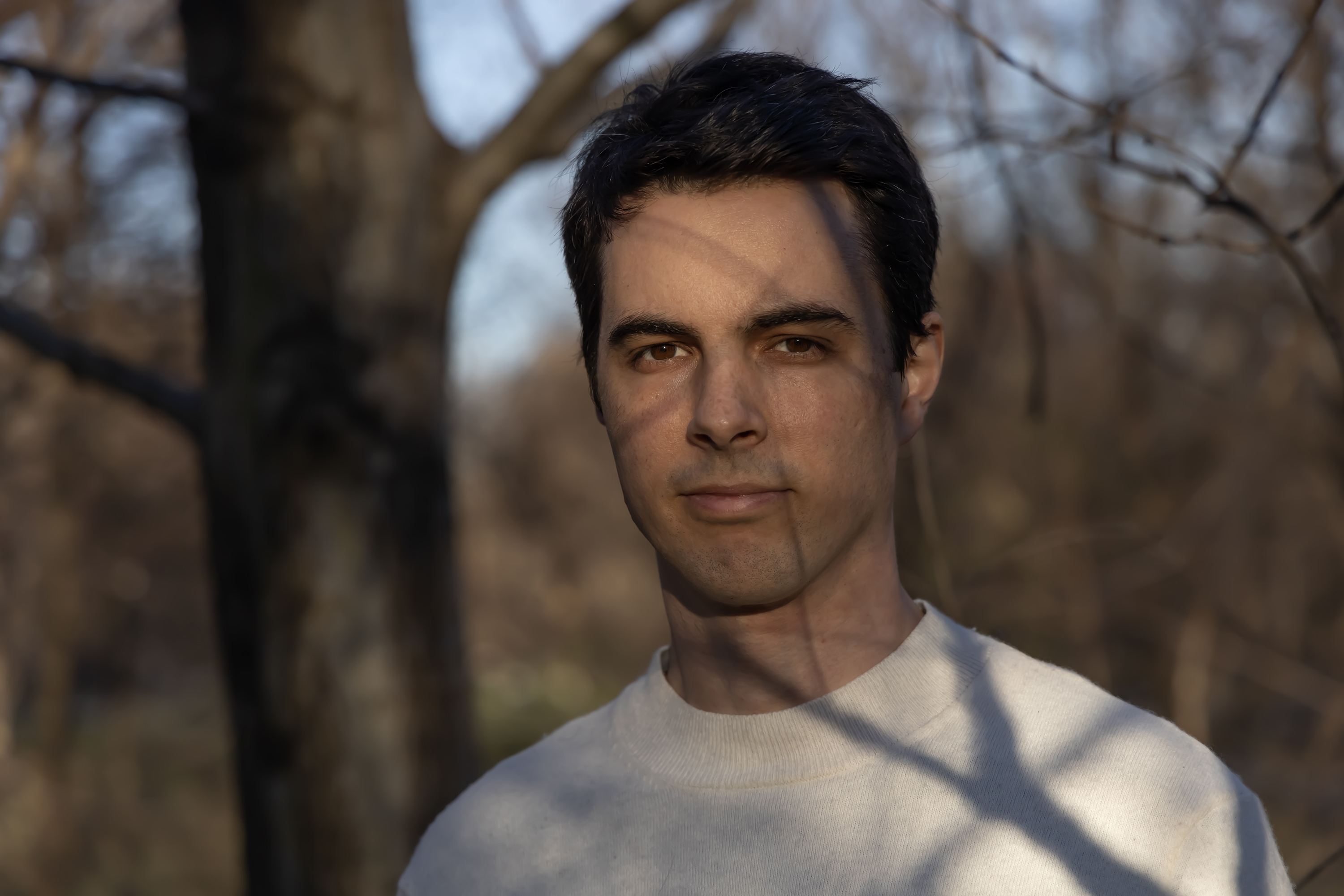 Gonzaga Gómez-Cortázar Romero (b. Bilbao, 1985) is an artist based in New York City whose practice focuses on the ephemerality of the environment and its connection to the passage of time. His work highlights our world’s transient nature and presents the familiar as unique and transcendent. He examines details and features of the landscape as a means to honor and restore our innate and intimate connection with Earth and its elements. Video and photography are the building blocks in his art practice, which over the years has expanded towards other disciplines including installation and performance.
Gonzaga Gómez-Cortázar Romero (b. Bilbao, 1985) is an artist based in New York City whose practice focuses on the ephemerality of the environment and its connection to the passage of time. His work highlights our world’s transient nature and presents the familiar as unique and transcendent. He examines details and features of the landscape as a means to honor and restore our innate and intimate connection with Earth and its elements. Video and photography are the building blocks in his art practice, which over the years has expanded towards other disciplines including installation and performance.
Gonzaga’s works have been exhibited in numerous galleries and festivals worldwide. Recently, his works have been exhibited in COP26 and COP27. In 2015, with his colleague David Cass, he created A La Luz, an online platform and curatorial project dedicated to artists whose work focuses on the environment. Points of Return was their first major joint curatorial project, transforming from an online presentation to a large-scale multimedia exhibition.
www.gonzagagomezcortazar.com
Miguel Lopes JerónimoMiguel Lopes Jerónimo (Portugal, 1987) is a freelance photographer, artist and curator based for almost seven years in Phnom Penh, having organized more than 50 exhibitions in Cambodia — including group shows on topics such as environment, social inequality, gender, disability and human rights, as well as being co-organizer of cultural events such as PenhArt, Cambodian Contemporary Art Fair. Passionate about working with NGOs on projects with impact, collaborating with other artists and creating exhibitions with meaning, he provided consultancy to organizations such as UNICEF, Pulitzer Center, Heinrich Boll Foundation, UN Migration, IDE, DFAT or GIZ, with photos published in most of Cambodian media besides international publications such as LeMondeDiplomatique. Miguel is interested in visual storytelling, art and photography as tools for awareness and social development, besides working between conceptual and documentary photography and exploring its use with other art practices such as sculpture, installation, video and sound.
Artist Statement
Jungle on my Mind: Koh Kong is a region suffering from severe deforestation due to illegal logging and endangerment of many of its endemic species. Poverty and lack of governmental support for development led locals to the only available source of income: hunting the wildlife. Mr. Koun, 39, Mr. Rith, 39, Mr. Sean, 44, Mr. Meuon, 58, Mr. Sok Out, 53, Mr. Ngeth, 52, and Mr. Rattanak, 36. They are all villagers from Chi Phat who used to poach animals for a living. Then the conservation NGO Wildlife Alliance approached them with awareness initiatives and training, convincing them and other villagers about the need to conserve the forest and the ecosystem. Now the majority earns their living through eco-tourism businesses and a few are being employed as rangers to patrol the jungle in search for the ones who don't comply. They destroy animal traps, look for signs of illegal logging and arrest hunters. This is a series of conceptual portraits of these former poachers turned into forest rangers. They are photographed holding pieces of broken mirrors in front of their faces with the reflection being the forest – as a symbol for their new care for nature, the breakthrough that led them to see beyond and keep the jungle on their minds. It's also a reminder that better ways are possible, rejecting old practices in exchange of more environmental ones. Always co-creating with local communities, finding approaches that take into consideration all the beings involved: trees, animals, people. "I like to be a ranger and enjoy protecting the animals and nature for the next generation. Occasionally we have problems with the people when we arrest someone from our village, the family gets angry with us. I explain to them that I'm following the law, this is the Cambodian law. Before I was a hunter as well, coming to the forest with my dog in search of animals like civets and pangolins, bears, deers or wild boards. But now forests give us jobs with ecotourism. And I want to keep alive animals like the sun bear or the pangolin for the young people to see them, since they are almost extinct. It's important to protect the forest because we are in a wildlife sanctuary. Nature gives us water and clean air, and protects us from the climate." Project in collaboration with the conservation NGO Wildlife Alliance in the Cardomom Mountains.
migueljeronimophotography.wordpress.com
Bethany Johnson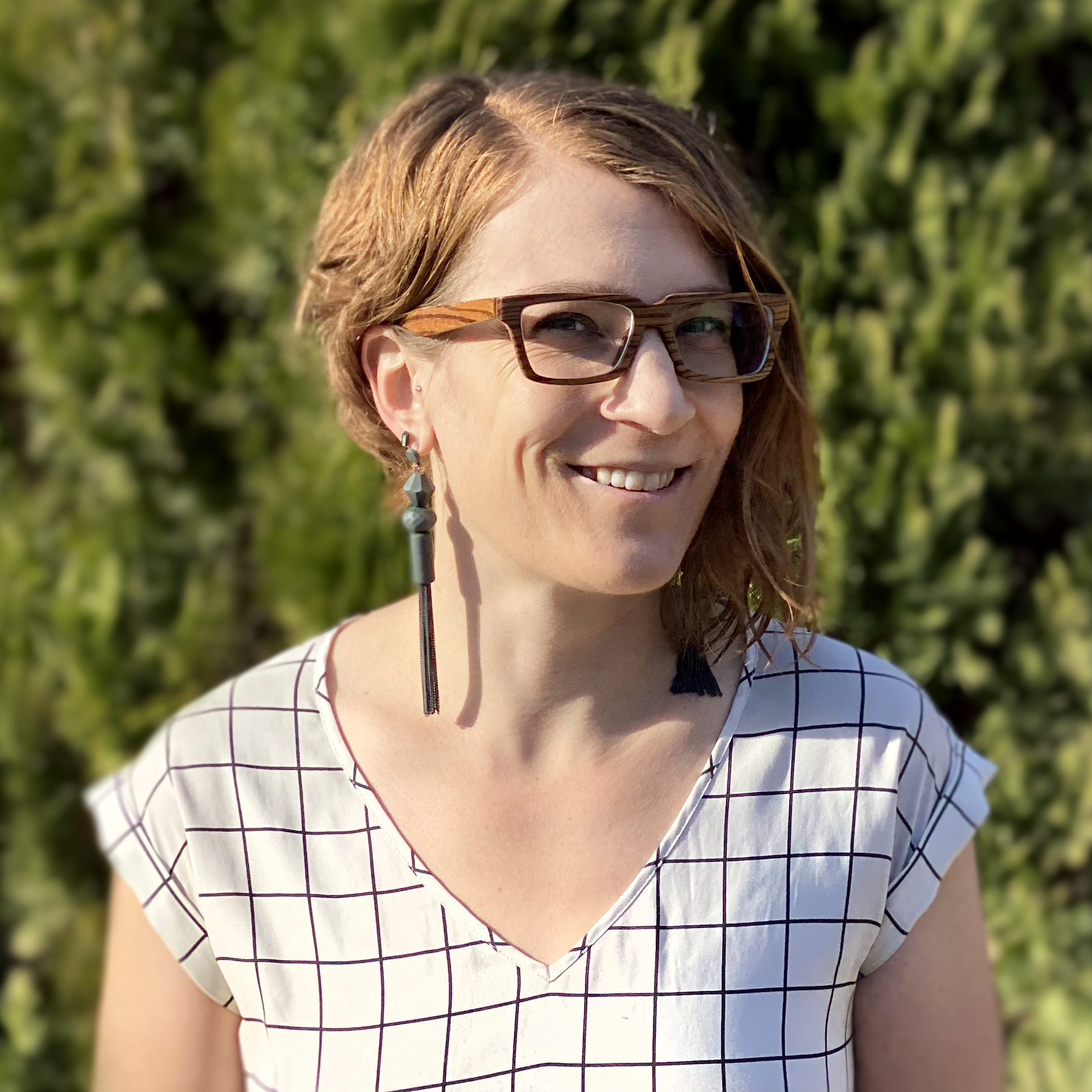 Bethany Johnson is an artist currently living in Austin, Texas, working in drawing, collage and sculpture. Johnson received her BA in studio art from Kalamazoo College in 2007 and MFA in painting from the University of Texas at Austin in 2011. Her work is represented by Moody Gallery in Houston, where her fifth solo exhibition is forthcoming in 2023. Johnson’s artwork has been featured in New American Paintings, Hyperallergic, and HuffPost, among others, and she has held residencies at Denkmalschmiede Höfgen in Grimma, Germany, Institut für Alles Mögliche in Berlin, and Joshua Tree Highlands Artist Residency, among many others. She is an Assistant Professor in the School of Art and Design at Texas State University, where she teaches courses in design and drawing. Johnson is a 2023 recipient of a Pollock-Krasner Foundation Grant.
Bethany Johnson is an artist currently living in Austin, Texas, working in drawing, collage and sculpture. Johnson received her BA in studio art from Kalamazoo College in 2007 and MFA in painting from the University of Texas at Austin in 2011. Her work is represented by Moody Gallery in Houston, where her fifth solo exhibition is forthcoming in 2023. Johnson’s artwork has been featured in New American Paintings, Hyperallergic, and HuffPost, among others, and she has held residencies at Denkmalschmiede Höfgen in Grimma, Germany, Institut für Alles Mögliche in Berlin, and Joshua Tree Highlands Artist Residency, among many others. She is an Assistant Professor in the School of Art and Design at Texas State University, where she teaches courses in design and drawing. Johnson is a 2023 recipient of a Pollock-Krasner Foundation Grant.
Artist Statement
Reminiscent of geologic formations, and appearing perhaps at home within a cabinet of natural curiosities, the intimate sculptures of Findings offer a multi-layered meditation on deep time, material metamorphosis, and the anthropogenic land-scaping of landfills, quarries, and road cuts.
These works take the form of stratified plinths of contrasting materials that are reminiscent of geological core samples, landfill strata, archival stacks and material storage. While the layered compositions strongly evoke land formations and geologic processes, all of the materials are discarded or found waste items, thereby also addressing notions of anthropogenic waste and its entombment. The waste materials are reclaimed from the artist’s personal waste stream, recovered from the landscape during regular litter removal excursions, and diverted from residential roadside bulk trash collection.
The dimensional works are first assembled and composed by cutting and stacking these collected materials, which include plastics, paper, aluminum, fabric, rubber, foam, cardboard and wood. Densely bound together with pressure by a hidden, internal armature of screws and bolts, the final sculptural forms are then trimmed and sanded to a smooth polish.The works’ satin surfaces evoke the hand-worn patina of worry stones, and the modest scale suggests the intimacy of a beloved keepsake, archived natural specimen, or historically hand-hewn scientific models. Despite their commonplace and otherwise abject component materials, the final results are mysterious and entrancing: the weighty sculptures reveal themselves slowly, asking for close examination and gradual discovery of their origins.
As a quietly urgent meditation on the damage of material consumption on our natural environment, the works of Findings offer a new alchemical life to otherwise discarded waste. This body of work addresses the artists’ growing concern around anthropogenic environmental degradation, and the practice follows logically from strict ethical principles surrounding the environmental impact of the artwork—both the avoidance of new material consumption, as well as the centering of these issues as facilitated by the artwork. Findings, therefore, serves as a holistic practice that functions simultaneously as artmaking and act of doting service, aesthetic inquiry and humble act of contrition and environmental repair. The works speak in layers to notions of scale, deep time, the accumulation of knowledge, and our collective futures on this planet.
bethany.remingtonjohnson.com
Luke Myers
BIO
www.lukeamyers.com
Miguel Sbastida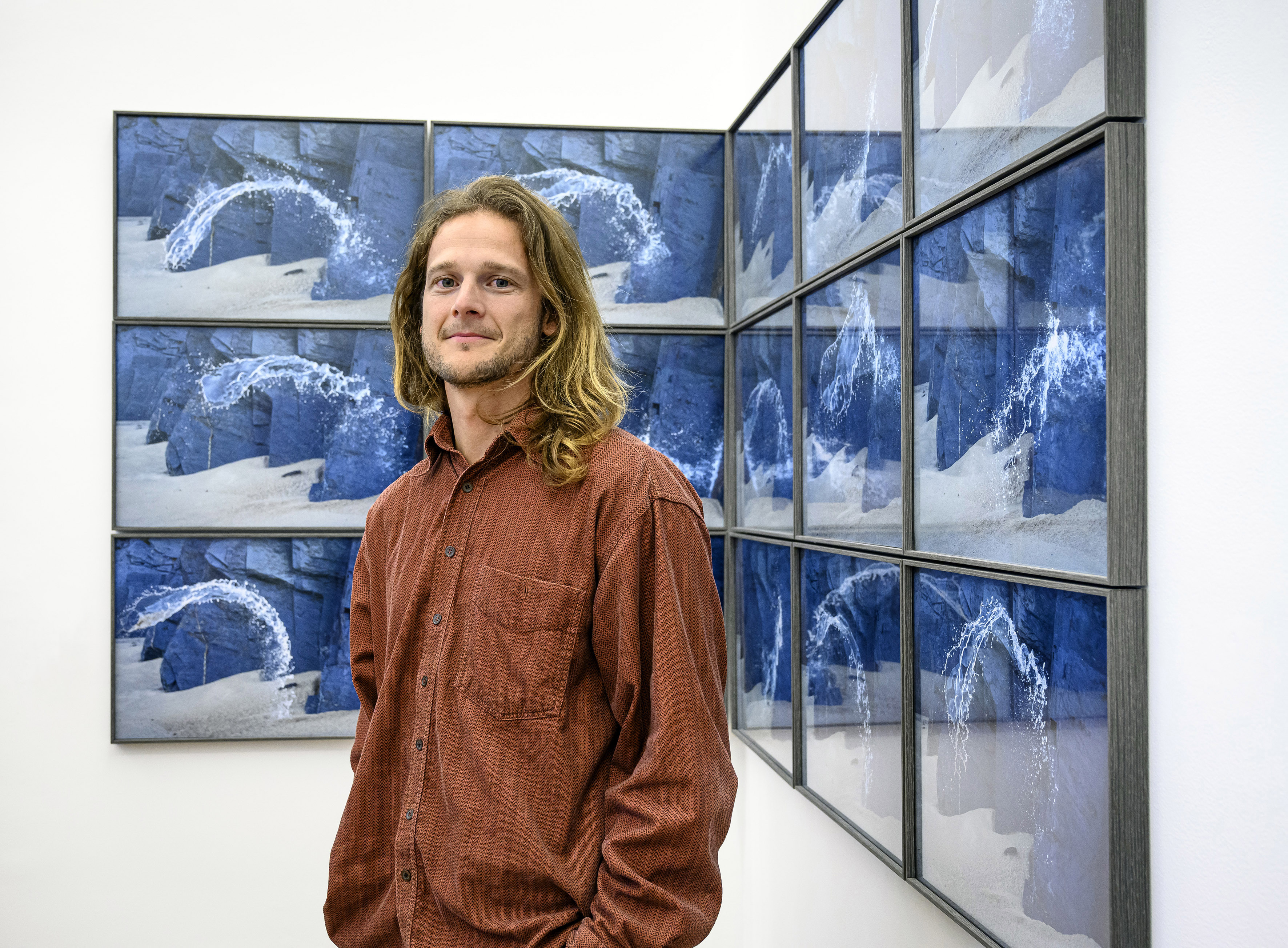 Miguel Sbastida (1989, Spain) graduated from an MFA at the School of the Art Institute of Chicago (2015-17), with the full support of a scholarship from La Caixa Foundation; where he was nominated for the Dedalus Foundation awards in Sculpture. He completed a BFA at Universidad Complutense of Madrid (2007-12) after his fellow BFA studies in Holland (2011) and Canada (2012). Since then, he has lectured at international symposiums and seminars like Climate-Truth-Now Chicago (2017), Ethics for Making in the Anthropocene (2018), Sustainability (or not so much) in art making and its institutions (2020), or II Forum Herbart Roots & Seeds (2021). Over the last ten years, his works have been exhibited internationally at venues like the Zhou B Art Center, ARCO Madrid, Korea Foundation Gallery Seoul, CDAN museum, Matadero Madrid, BOZAR Brussels, Chicago Sullivan Galleries, Es Baluard Museum, or the Netherlands Institute for Media Art; among others. His practice has been awarded with several prizes, production grants and residencies including the Asia Culture Center of South Korea International Residency Grant, Madrid Art Funds, Emerging Illinois Artists, Matadero Madrid-DKV collection grant, Circuitos de Artes Plásticas, Oneminutes Film Art Amsterdam, BilbaoArte Foundation, or the School of the Art Institute of Chicago Professional Development Award.
Miguel Sbastida (1989, Spain) graduated from an MFA at the School of the Art Institute of Chicago (2015-17), with the full support of a scholarship from La Caixa Foundation; where he was nominated for the Dedalus Foundation awards in Sculpture. He completed a BFA at Universidad Complutense of Madrid (2007-12) after his fellow BFA studies in Holland (2011) and Canada (2012). Since then, he has lectured at international symposiums and seminars like Climate-Truth-Now Chicago (2017), Ethics for Making in the Anthropocene (2018), Sustainability (or not so much) in art making and its institutions (2020), or II Forum Herbart Roots & Seeds (2021). Over the last ten years, his works have been exhibited internationally at venues like the Zhou B Art Center, ARCO Madrid, Korea Foundation Gallery Seoul, CDAN museum, Matadero Madrid, BOZAR Brussels, Chicago Sullivan Galleries, Es Baluard Museum, or the Netherlands Institute for Media Art; among others. His practice has been awarded with several prizes, production grants and residencies including the Asia Culture Center of South Korea International Residency Grant, Madrid Art Funds, Emerging Illinois Artists, Matadero Madrid-DKV collection grant, Circuitos de Artes Plásticas, Oneminutes Film Art Amsterdam, BilbaoArte Foundation, or the School of the Art Institute of Chicago Professional Development Award.
Part of his work can be found at institutions including the School of the Art Institute of Chicago Joan Flasch Collection, Asia Culture Institute of South Korea, Harvard University, DKV Collection, BilbaoArte Foundation, the Oneminutes Foundation Netherlands, or the MoMA Franklin Furnace Artist’s Book Collection. His work is represented by Lucía Mendoza Gallery (Madrid). He lives and works in Spain and beyond.
Artist Statement
Working at the boundary of environmental studies and the visual arts, I develop interdisciplinary installations, performances and video works around matters of cultural ecology, geological phenomena and the interconnected processes of climate breakdown.
Through a highly conceptual approach inspired by the natural sciences, the post-humanities, environmental activism and postcolonial studies, my work seeks to generate spaces for critical reflection around dominant ideologies of “nature”, and to provide new narratives of belonging, cross-contamination and mutuality in our relationship with the Earth Organism.
Some ongoing projects include sculptural installations inspired by reef-restoration initiatives that adopt corals as they are exhibited; an archaeological investigation of the anthropogenic fossil record of the industrialization of northern Spain; or an inquiry on some current biomarkers of climate change through the botanical study of plants and their changing habitats.
www.miguelsbastida.com
Adam Sébire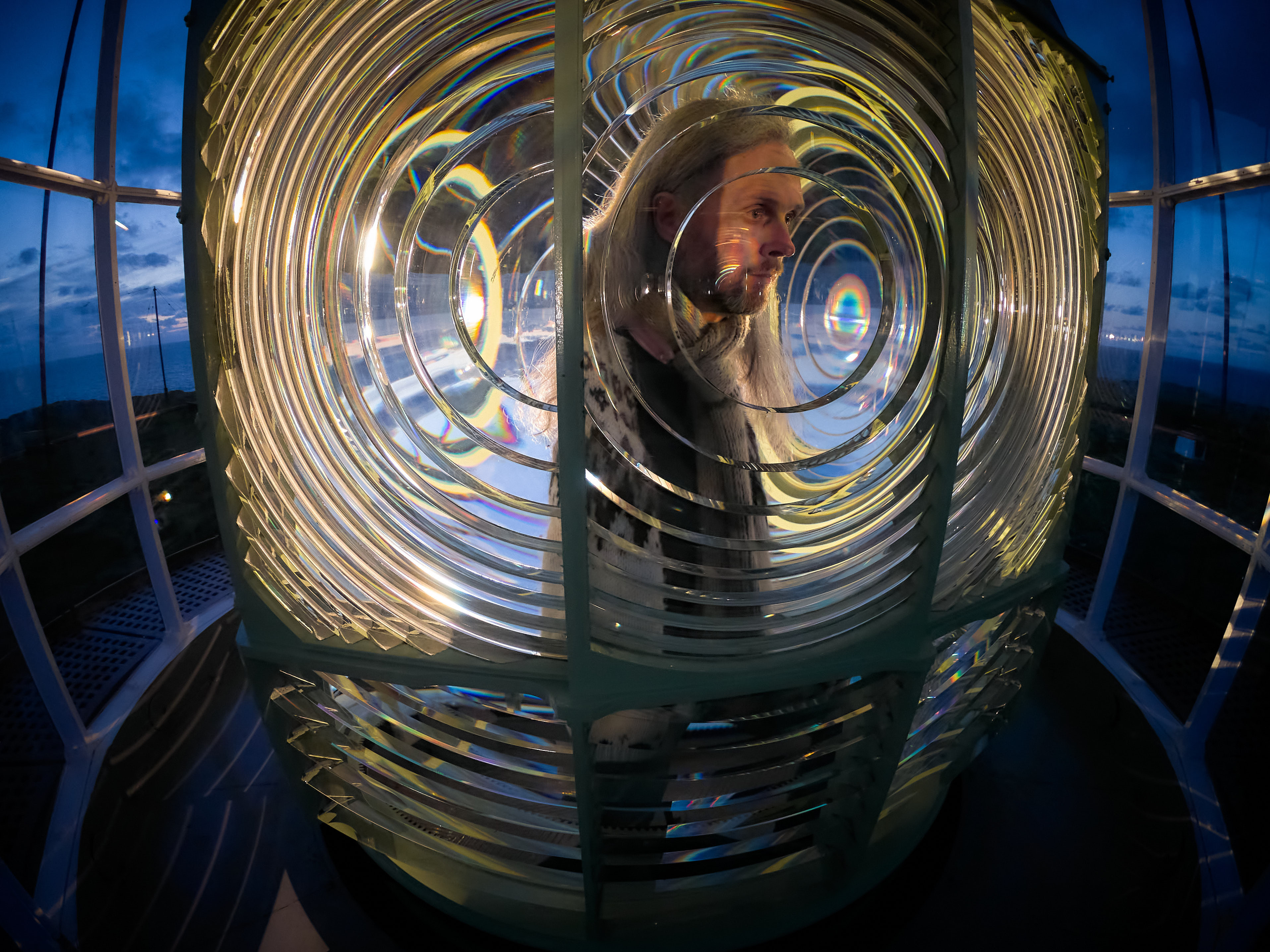 Adam Sébire (Australia, 1970) is one of the Arctic’s 4 million human inhabitants. Adam had just opened his solo exhibition at Svalbard’s art gallery when Covid closed Australia’s borders for 18 months, marooning him above Norway’s Arctic Circle; he now lives and works there. Adam studied documentary filmmaking at the national film schools of Australia & Cuba, going on to direct documentaries for Australian public broadcasters ABC & SBS. His experiences filming on Tuvalu in 2003, only 2m above the rising waters of the Pacific, turned his work towards climate change and he completed an MFA (2015) on how the climate emergency presents particular representational challenges for visual art.
Adam Sébire (Australia, 1970) is one of the Arctic’s 4 million human inhabitants. Adam had just opened his solo exhibition at Svalbard’s art gallery when Covid closed Australia’s borders for 18 months, marooning him above Norway’s Arctic Circle; he now lives and works there. Adam studied documentary filmmaking at the national film schools of Australia & Cuba, going on to direct documentaries for Australian public broadcasters ABC & SBS. His experiences filming on Tuvalu in 2003, only 2m above the rising waters of the Pacific, turned his work towards climate change and he completed an MFA (2015) on how the climate emergency presents particular representational challenges for visual art.
Adam’s own video art assumes beauty to be the sharpest tool in the box, responding with slow-, reverse- and fast-motion; deploying climate scientists’ thermographic imagers. Using a drone he adapts techniques from early Renaissance artists such as Bosch's elevated vantage point, to detach viewers from everyday perspectives, to suggest an overview on the state of the world, to beckon a choice. He also applies their techniques of multi-panel paintings (polyptychs) to multi-screen video montage.
As artist-filmmaker & photographer Adam's artworks have exhibited widely, from Sydney Film Festival to Al Jazeera International; from the Deutsches Museum and Max Planck Institute in Munich to the South Australian Museum and Glasgow Science Centre during COP26; to the United Nations NYC headquarters. Most recently Adam won the critics’ prize in the 2021 Northern Norway Art Exhibition and his works are now licensed by climate change organisations including the UNFCCC and ClimateOutreach.
www.adamsebire.info
Ulrika Sparre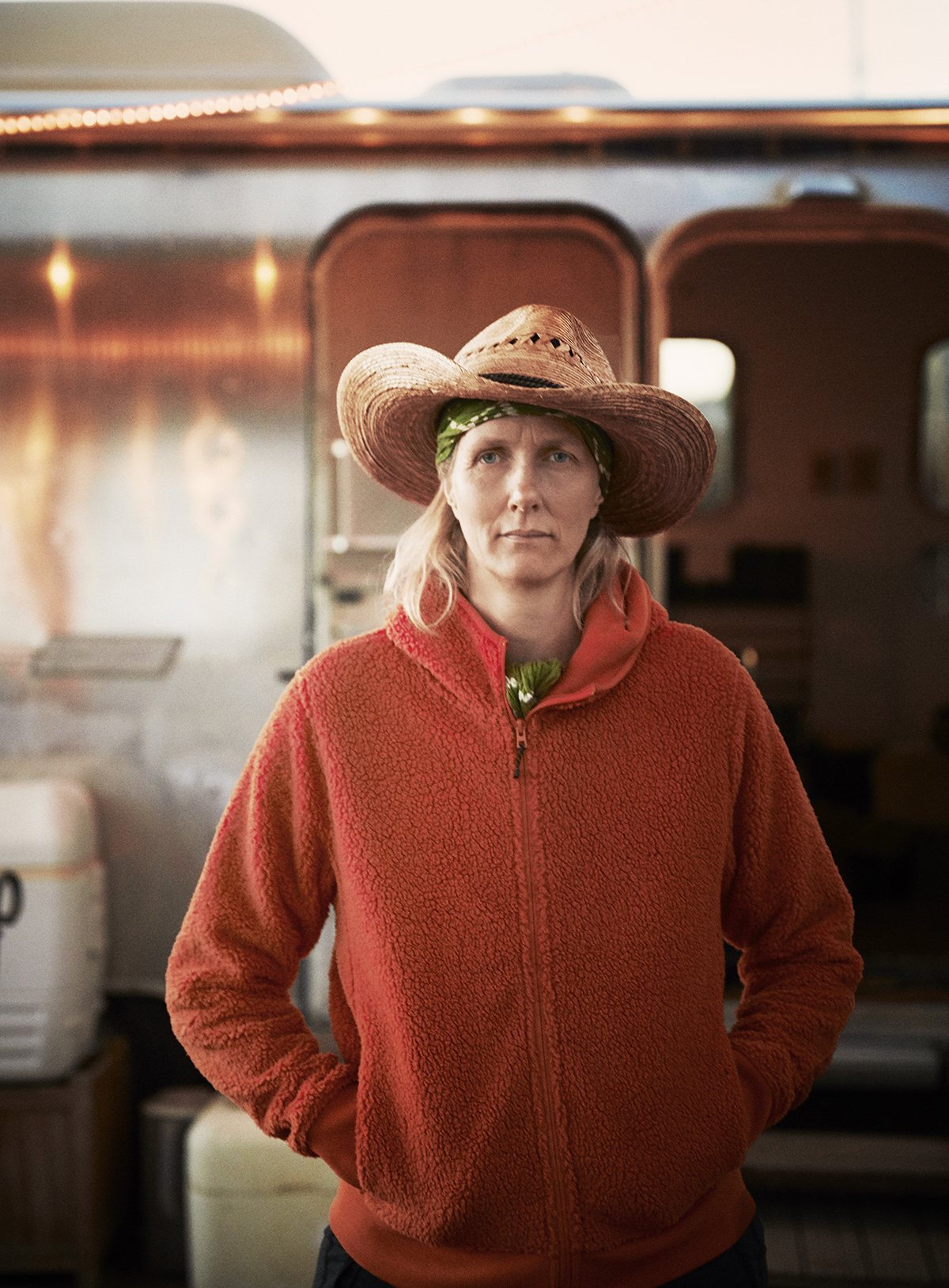 Ulrika Sparre (b. 1974) lives and works in Stockholm, Sweden. She applies her artistic practice to multiple media creating installations, sculpture, photography, film, performance and sound art. She has an MFA from Konstfack (University College of Arts, Craft and Design) in Stockholm and studied sculpture at the Gerrit Rietveld Academie in Amsterdam. In recent years, Sparre has exhibited at Färgfabriken, Reykjavik Art Museum, Varbergs Konsthall, Stene Projects, Index Foundation and at the Interactive Institute. Additionally, she has performed a number of projects in public spaces as well as participated in the international projects GNAP South Africa and GNAP Germany.
Ulrika Sparre (b. 1974) lives and works in Stockholm, Sweden. She applies her artistic practice to multiple media creating installations, sculpture, photography, film, performance and sound art. She has an MFA from Konstfack (University College of Arts, Craft and Design) in Stockholm and studied sculpture at the Gerrit Rietveld Academie in Amsterdam. In recent years, Sparre has exhibited at Färgfabriken, Reykjavik Art Museum, Varbergs Konsthall, Stene Projects, Index Foundation and at the Interactive Institute. Additionally, she has performed a number of projects in public spaces as well as participated in the international projects GNAP South Africa and GNAP Germany.
Artist Statement
Swedish artist Ulrika Sparre investigate the mechanisms, behaviors and social pattern that constitute our lives. Her practice explores subjects like individuality and the impact of the development towards individualism and consumerism in contemporary society. She is interested in how non-religious and scientific beliefs are expressed in the secularized western society of today. The perception of nature, a higher truth, and spiritual experiences are central themes in her work. The starting point for Ear to the Ground is a search for the spiritual and the physical in nature, and how these relationships are created and transformed. She has performed several field recordings of stones in which she reflects on what we perceive and take with us from an experience in nature. Those who observe from a distance are not involved. Ear to the Ground seeks to break down distance and the perception that there is a “nature” that exists apart from us. In order to face the threat of climate change, we must give voice to non-human actors—the gardens, the cities, the stones, the glaciers. Sparre wants to investigate how our relationship with what we consider nature can be reevaluated by giving it a voice and a possible language. Perhaps by repositioning our perspective, we can give rights to our environment and to non-human actors in our world.
www.ulrikasparre.com
Erin Woodbrey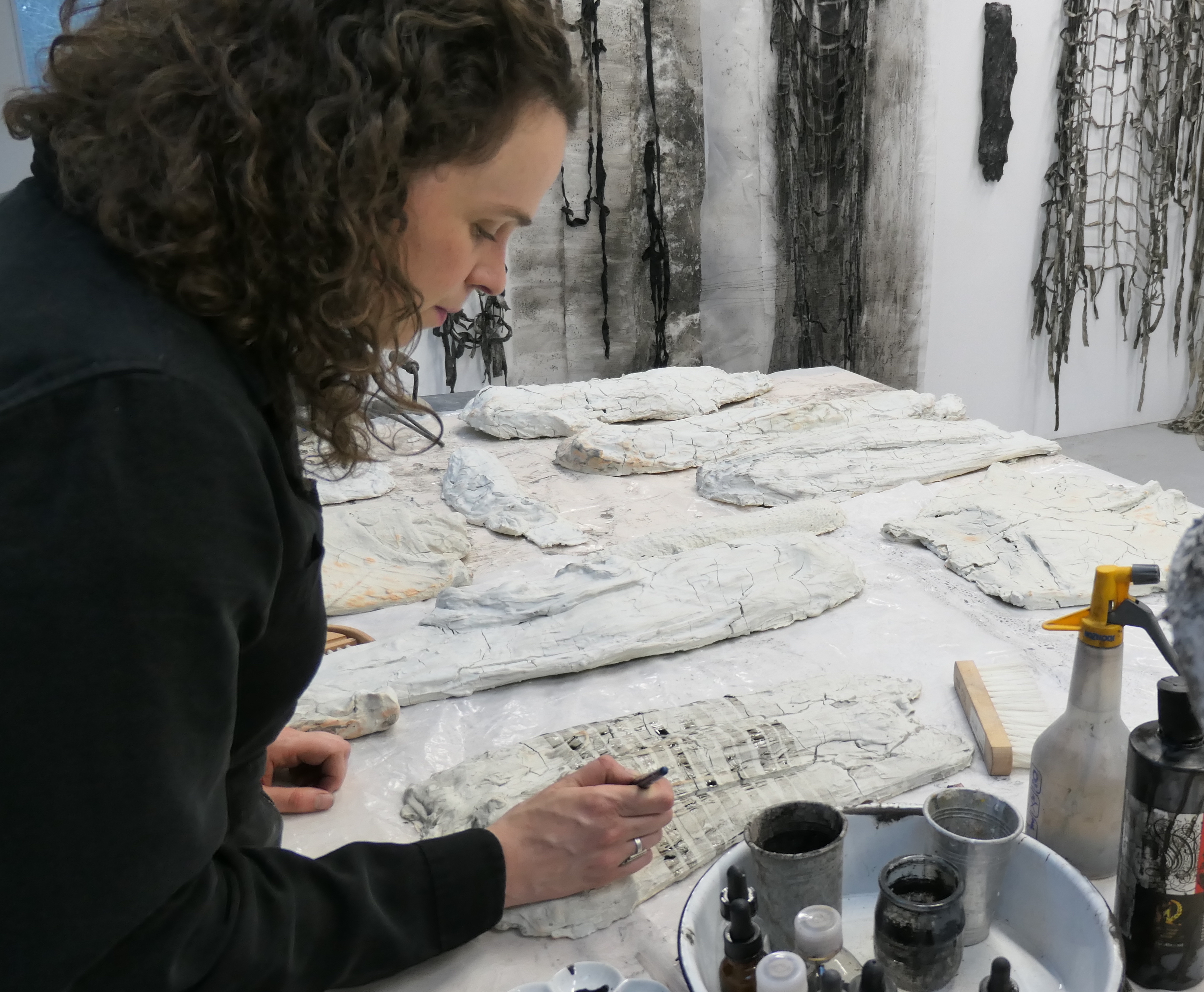 Erin Woodbrey is a New England-based artist whose body of interdisciplinary work utilizes sculpture, printmaking, photography, and time-based media. Woodbrey’s work seeks to parse the fused and knotted qualities of the current global environmental crisis as examined through objects, the landscape, and the relationships between bodies and architectures. Presented, piece by piece, as a study of fabricated and naturally occurring units of space and time, Woodbrey’s gaze wide in scope and is trained on the interrelated qualities of process, time, material, nature, the body, and architecture. Using sometimes insubstantial materials to depict what seems simultaneously indestructible and delicate, Woodbrey explores the tension between permanence and transience, growth and decay. Often involving a dialog on contemporary ecological discourse and new materialisms, Woodbrey’s work asks essential questions about how the functions of objects and space inform, mirror, and tend to the human condition and more broadly, conditions of being.
Erin Woodbrey is a New England-based artist whose body of interdisciplinary work utilizes sculpture, printmaking, photography, and time-based media. Woodbrey’s work seeks to parse the fused and knotted qualities of the current global environmental crisis as examined through objects, the landscape, and the relationships between bodies and architectures. Presented, piece by piece, as a study of fabricated and naturally occurring units of space and time, Woodbrey’s gaze wide in scope and is trained on the interrelated qualities of process, time, material, nature, the body, and architecture. Using sometimes insubstantial materials to depict what seems simultaneously indestructible and delicate, Woodbrey explores the tension between permanence and transience, growth and decay. Often involving a dialog on contemporary ecological discourse and new materialisms, Woodbrey’s work asks essential questions about how the functions of objects and space inform, mirror, and tend to the human condition and more broadly, conditions of being.
erinwoodbrey.com
Artists on Screen
Collin Bradford
BIO
Fiona Carruthers


